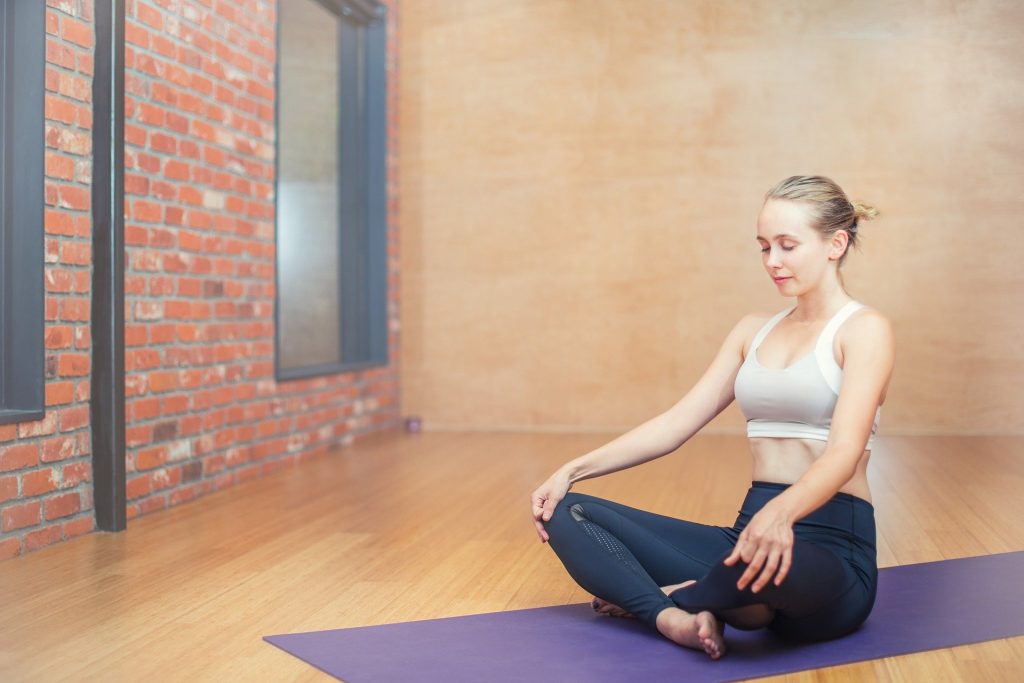By practicing conscious breathing through simple exercises learn how, to remove stress from your daily life and find calm. Reverse breathing, abdominal breathing, yoga: a few sessions a day and you will quickly notice benefits on sleep quality, concentration and general well being.
The benefits of conscious breathing

Breathing is a mechanical gesture that we make throughout our lives without even thinking about it. Breathing well is an effective way to fight anxiety. Stress increases heart rate, blood pressure and perspiration, all of which are reduced by deep, controlled breathing.
The benefits of good breathing
A conscious and deep breathing is beneficial in every way, for both private and professional life:
- Pain relieving effect
- Reduces shortness of breath
- Improves quality of sleep
- Helps with the ability to concentrate
- Oxygenation of the body, an essential function for the entire metabolism.
Work on your breathing in three stages
You can learn to work on your breathing very quickly by following these steps:
- Become aware of your breathing, i.e. to listen to your feelings by progressively freeing yourself from bodily tensions and concentrating on each stage of breathing.
- Do simple exercises to breathe well: you can draw many examples from the practice of yoga, as well as from approaches such as meditation and sophrology.
- Associate conscious breathing exercises with positive thoughts to gradually reach a state of total relaxation.
3 anti-stress breathing exercises you can perform anywhere

There are several ways to breathe. Automatic breathing is usually shallow, superficial and concentrated on the upper body: it is called chest breathing. Discover 3 breathing exercises, each using a specific technique to meet different objectives.
Abdominal breathing to fight against stress
This abdominal breathing exercise aims to use the abdomen to breathe to unblock the diaphragm and relax:
- Lie down, place one hand on your lower abdomen and the other on your chest.
- Breathe in slowly through your nose for 3 seconds, concentrating on the air flowing through your body until the hand on your stomach lifts.
- Hold your breath for 2 seconds, then slowly exhale through your mouth for 6 seconds, feeling your belly drop gently (without forcing the movement).
- After several repetitions, you should feel your body’s tensions relax. Do the exercise as many times as you want, it helps you to regain calm in period of stress.
Pranayama: the art of breath control in yoga
The branch of yoga dedicated to breath control is called Pranayama. This breathing exercise is an ideal preamble to a meditation:
- Sit in the lotus position.
- Sitting on the ground, place the right foot on the left thigh and vice versa. Keep your knees as low as possible.
- Keep your back and head in line, shoulders relaxed.
- Put your hands on your knees, palms up.
- Put your thumb and forefinger together, keep the other fingers open.
- Practice alternating breathing, or Nadi Shodhana, as recommended in Ayurvedic medicine for its soothing and energising effects:
- Close your eyes and breathe deeply several times.
- Bend the index and middle fingers of the right hand, block the right nostril with the thumb and breathe through the left nostril.
- Inhale for four seconds, exhale for eight.
- Continue the exercise for 5 minutes, alternating the two nostrils.
Get to sleep in a minute with a breathing exercise
This breathing exercise developed by Andrew Weil, a researcher at Harvard University, makes it possible to fall asleep easily in less than a minute:
- Settle down in the dark, quiet, away from any source of stress or distraction.
- Touch your palate with the tip of your tongue throughout the exercise.
- Breathe out to get as much air out of your lungs as you can.
- Breathe in through your nose and count to four.
- Hold your breath and mentally count to seven slowly.
- Exhale through your mouth by counting to 8 (always with your tongue touching the palate) without being afraid to make noise.
- After 2 or 3 repetitions, you should be able to fall asleep!
The benefits of reverse breathing

Another breathing technique, reverse breathing works muscles that are rarely engaged, massages the abdomen and strengthens the abdominal belt: this exercise is very good for the figure!
The principle is simple:
- Breathe in through your nose by tucking your stomach in and contracting your perineal muscles.
- Hold your breath for a few seconds.
- Exhale through your mouth for a prolonged period of time, relaxing the abdominal muscles.
This type of breathing is unnatural, even if it is the kind that babies adopt before birth. This exercise should not be practised for more than 3 minutes at a time, nor should it be forced.
Whichever exercise you choose, the key to relaxation is in awareness of your breathing.
Check out our Health & Fitness page for more advice.
